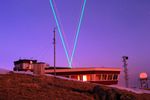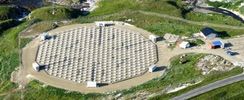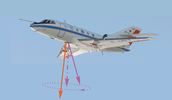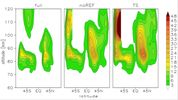D1
D1: Analysis of new and already existing atmospheric measurements of the GW distribution
D1: Analysis of new and already existing atmospheric measurements of the GW distribution
A useful synthesis of available measurements in a consistent picture could be aided by a GW permitting non-hydrostatic global atmosphere model with a local refinement option to almost GW resolving. Even such a model, however, has limitations. Many source processes are based on imprecise subgrid-scale (SGS) parameterizations, the model resolution would not be able to handle turbulent GW dissipation explicitly, and the model’s discretization errors will influence its dynamics at the smallest resolved scales. Either measurements or GW-permitting modeling alone would have limited value. Best confidence can be reached by validating a model against measurements. Combining measurements from a campaign seems interesting, since then the validation will cover a wider spectral range and several locations. Such a validation has to be performed for a specific meteorological situation, requiring that the model be initialized with assimilated data, as in numerical weather prediction (NWP). Good agreement between model and observations in such a situation increases confidence in the model treatment of source processes and propagation. Validation against global satellite-data statistics represents a supplementary check. The validated model can then be used as a practical, comprehensive test bed for theoretical developments. Needless to say that model improvements, spurned by disagreements between model and observations, will further enhance the synthesis provided by the model. Such developments will constitute the iterative process of learning in the RU. This leads to the following sub-objectives:
► D1: Analysis of new and already existing atmospheric measurements and weather-service data of the GW distribution (contributing projects: PACOG, SV, GW-TP):




► D2: Development of a GW permitting global model with the following properties (contributing projects: GWING, SV, GW-TP, SI, 3DMSD):


► D3: Validation of the GWs simulated by the model, by comparisons with available measurements and other models (contributing projects: GWING, PACOG, SV, GW-TP, 3DMSD):